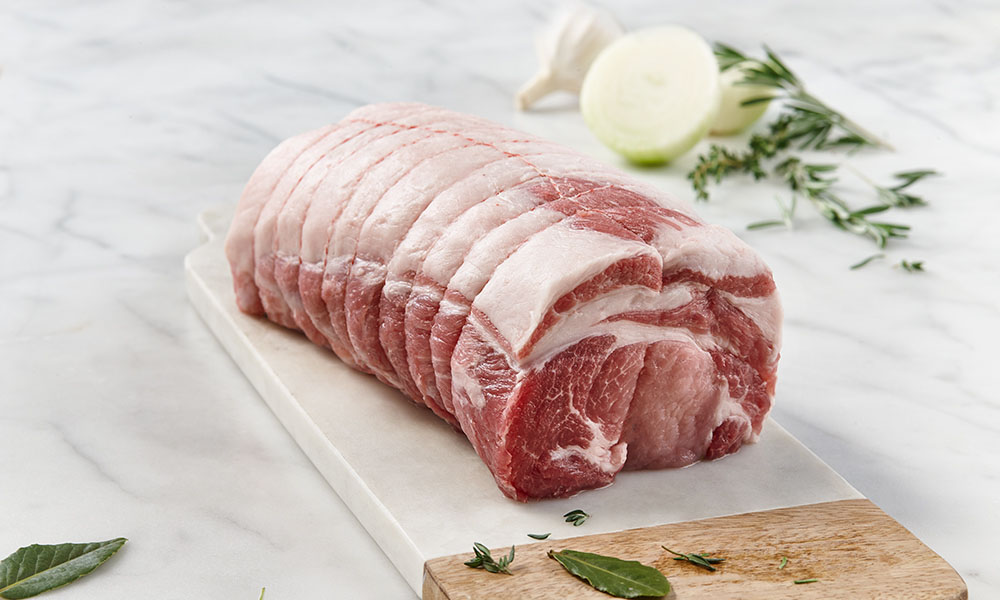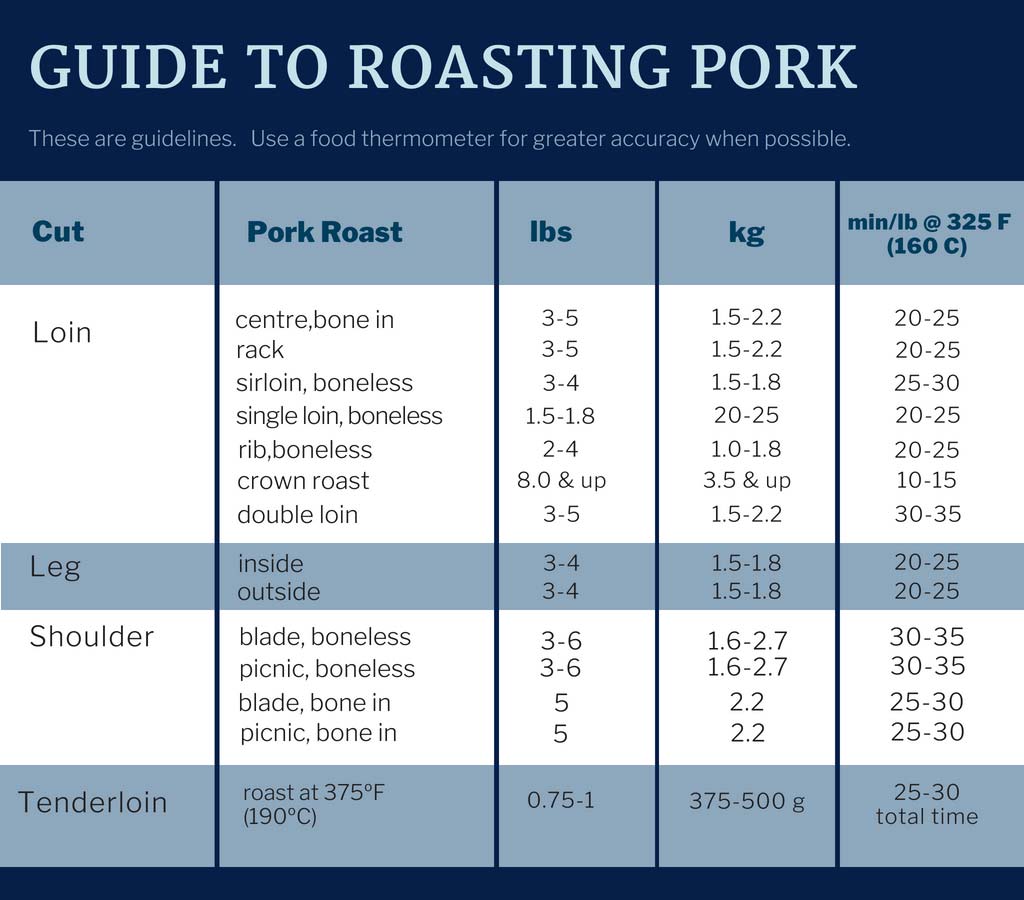Pork Cooking Guide
Cooking Guide
Temperature
Pork need not be overcooked. In the past, it was recommended that pork be cooked “very well” to be safe, because of the risk of trichinosis. This, unfortunately, often resulted in dry, tough meat, and some people still associate pork with this negative experience. Fortunately, with improved food safety knowledge and better production methods in Canada, trichinosis is no longer a risk in Canadian pork. We now know pork can be cooked safely to (160°F/71°C) or less, which produces a juicy and tender product. When cooked to this temperature, pork may still have just a hint of pink in the middle, for instance inside a cooked roast or very thick chop. The exception is ground pork and sausage, which like all ground meats, should be cooked thoroughly.
Cooking Temperatures in Canada vs. USA
Pork in Canada (whole cuts) need to be cooked to an internal temperature of 160˚F (71˚C). For more information please visit the following link: https://www.canada.ca/en/health-canada/services/general-food-safety-tips/safe-internal-cooking-temperatures-chart.html
Pork in USA need to be cooked to an internal temperature of 145˚F for whole meats with a 3 minute resting period. For more information please go the the following link: https://www.fsis.usda.gov/wps/portal/fsis/topics/food-safety-education/get-answers/food-safety-fact-sheets/safe-food-handling/safe-minimum-internal-temperature-chart/ct_index
*Canada has not yet changed its cooking temperatures because Health Canada is doing its own separate investigation independent of the USDA in the United States.
Using a Meat Thermometer
A meat thermometer is an essential kitchen tool. Avoid guessing when pork is done by always using a meat thermometer.
Tips
Insert the thermometer into the centre of the thickest part of the meat, away from bone or fat for the most accurate reading.
Make sure the thermometer does not pierce all the way through to touch the bottom of the baking pan.
When cooking stuffed pork roasts, ensure the tip of the meat thermometer is in the meat, not the stuffing.
Check to make sure that your thermometer is oven-safe: oven-safe thermometers can stay in the meat and allow you to check the temperature without opening the oven door. Other thermometers cannot stay in the oven, and are only used to check temperatures towards the end of cooking.
If using a “pop-up” timer, keep in mind these are only made for one use, and are made specifically for a certain meat (e.g. you cannot use a ‘pop-up’ meat timer sold with a turkey for your pork
Pork Roasting Guide
The best way to know if meat is cooked properly is to use a meat thermometer, inserted into the thickest part of the meat, to check the internal temperature (160°F/71°C). For roasts, including tenderloin, you can remove the pork from the oven when the internal temperature reaches 155°F/68°C, then cover loosely with aluminum foil – the temperature will rise to the recommended 160°F/71°C after 10-15 minutes as the roast sits.
If the cut of meat is too thin to check with a thermometer, you can pierce cooked meat with a fork or knife and look to see if the juices are clear.
An approximate guide to cooking different cuts of pork can also be gauged using “minutes per pound/kg”.
Source: putporkonyourfork.com


